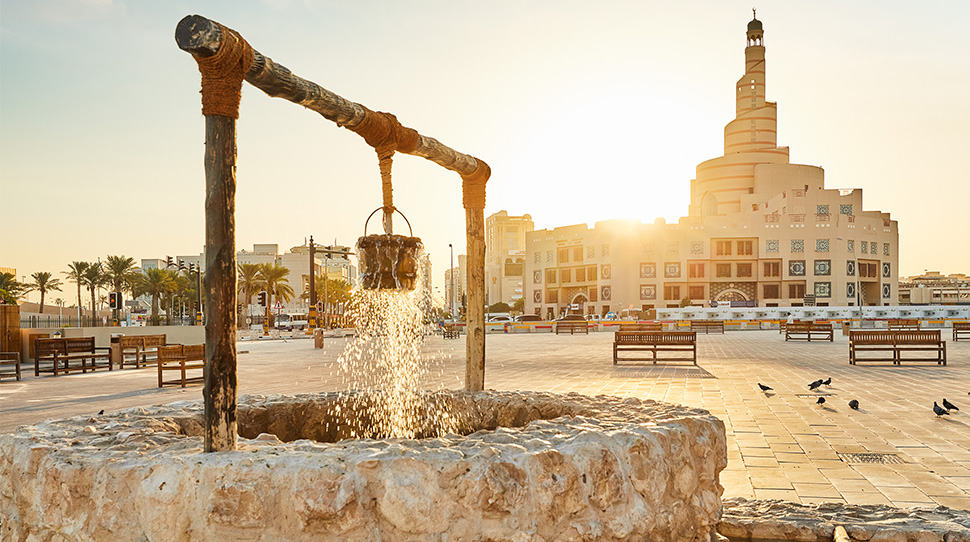

On the surface, Qatar’s gleaming capital of Doha offers a glamorous escape. But dig a little deeper, and you will find a culturally rich city with a thriving dining scene.
After hosting the World Cup in 2022, Doha has evolved into a vibrant mix of excellent hotels, diverse international and local dining options and unique cultural experiences.
Whether you’re here for a quick stopover or a longer sojourn, Doha will surprise and delight you. Here’s how to make the most of it all during two days in this Middle Eastern gem.
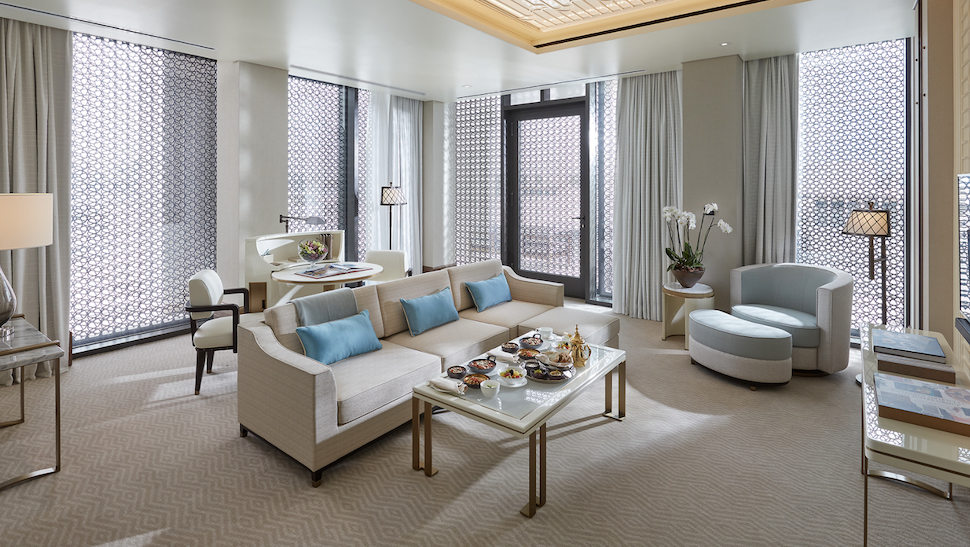
Day One
Base yourself at the Forbes Travel Guide Five-Star Mandarin Oriental, Doha in the city’s redeveloped historic heart, Msheireb. The 158-room property oozes quiet luxury. Details like the Five-Star spa and bespoke Qatari-influenced amenities make the hotel feel like an oasis in one of the city’s most bustling spots. Fuel up for the day ahead with breakfast at the hotel’s popular IzuIzu on Baharat Msheireb — the buzzy public square in the center of the area. Order the elegant plates of truffled eggs or avocado toast.
If you want a boutique hotel, The Ned Doha fits the bill. Housed in the former Ministry of the Interior building, The Ned leans into its mid-century credentials with an art-filled lobby, a Hollywood-esque outdoor pool and 1970s-influenced rooms. Millie’s, the all-day dining spot, crafts an old-school English breakfast and a view of the Corniche.
While in the area, spend your morning at the Msheireb Museums, which are housed in four restored heritage homes. The museums provide a window into Qatar’s past, showcasing the country’s fascinating social, cultural and economic development. You’ll gain a deeper understanding of traditional Qatari life, the oil industry’s impact and contemporary Qatar’s historical context. Highlights are the Bin Jelmood House, which addresses the history of slavery in the region and human exploitation in the modern age and the Radwani House, which depicts Qatari family life over the generations.
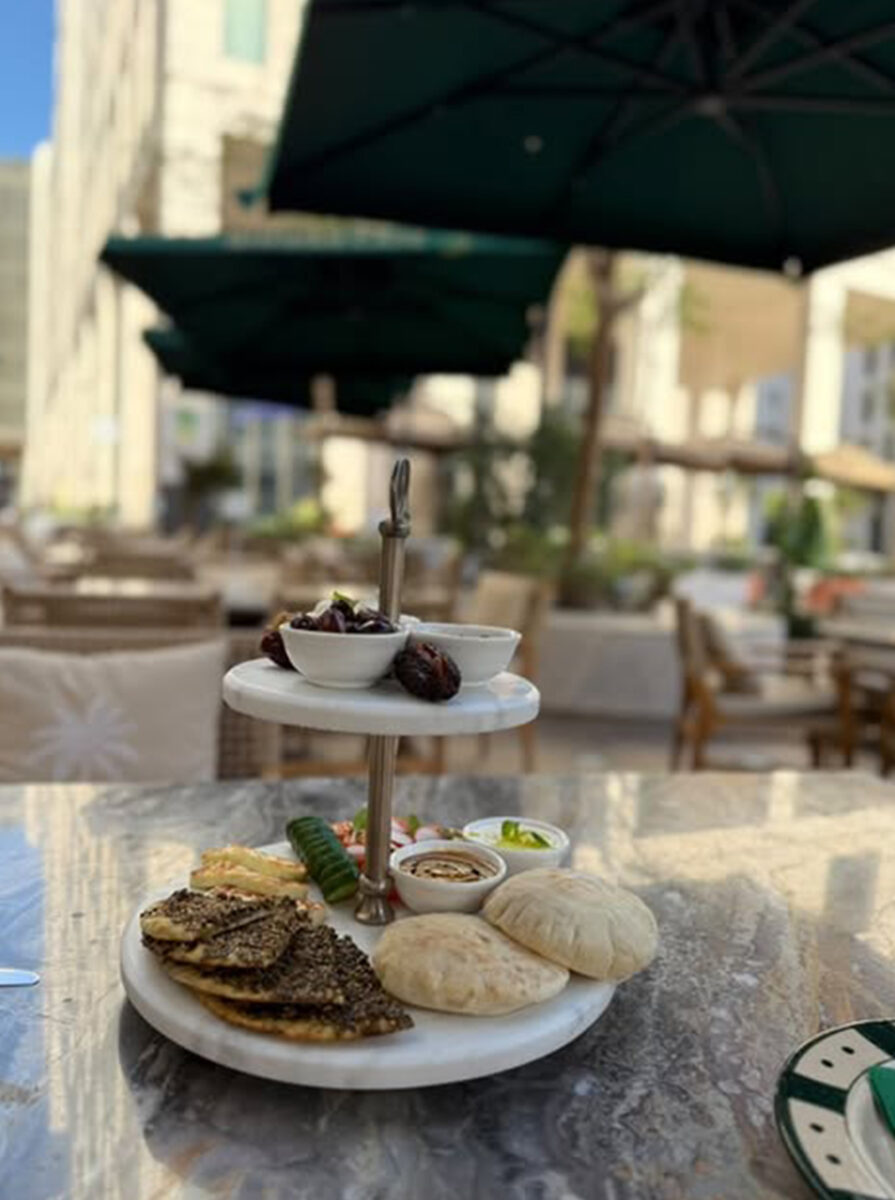
Wander around Msheireb, grabbing caffeine at one of its photo-ready coffee shops like Toby’s Estate, an Australian café, or Qinwan, which infuses Qatari dates in its drinks and dishes. The M7 – Msheireb Cultural Forum is an art space in the center of Msheireb and features regular exhibitions and events with local and international artists and designers.
A short drive away is the National Museum of Qatar, designed by French architect Jean Nouvel, inspired by the desert rose, a crystalline formation found in the Qatari desert. It houses interactive and immersive exhibits that narrate Qatar’s history from its earliest moments to the present and future.
Lunch plans should include Jiwan, a modern Qatari restaurant within the museum with interiors that take cues from the country’s pearl diving tradition. Working with culinary legend Alain Ducasse, the menu reimagines Qatari classics, using traditional ingredients like saffron and locally caught seafood prepared with French techniques. Finish your meal with coffee or tea sitting on the terrace while feasting on unobstructed views across Doha’s iconic skyline and beyond.
If you need a dose of retail therapy, grab a taxi and go 20 minutes north of the city to Place Vendome. Calling this a “mall” is an understatement — the Parisian-inspired development is reminiscent of famed high-end French shopping street Rue de la Paix at the original Place Vendome. Here, you will find all the luxury brands (Balenciaga, Fendi) and local businesses (Golden Honey and Sweets dessert shop) you desire. While you’re there, don’t miss the chance to see dancing fountains, best viewed from one of the cafés and restaurants surrounding the courtyard. Vogue Café is a stylish spot to park yourself and indulge in intricate pastries and cakes.
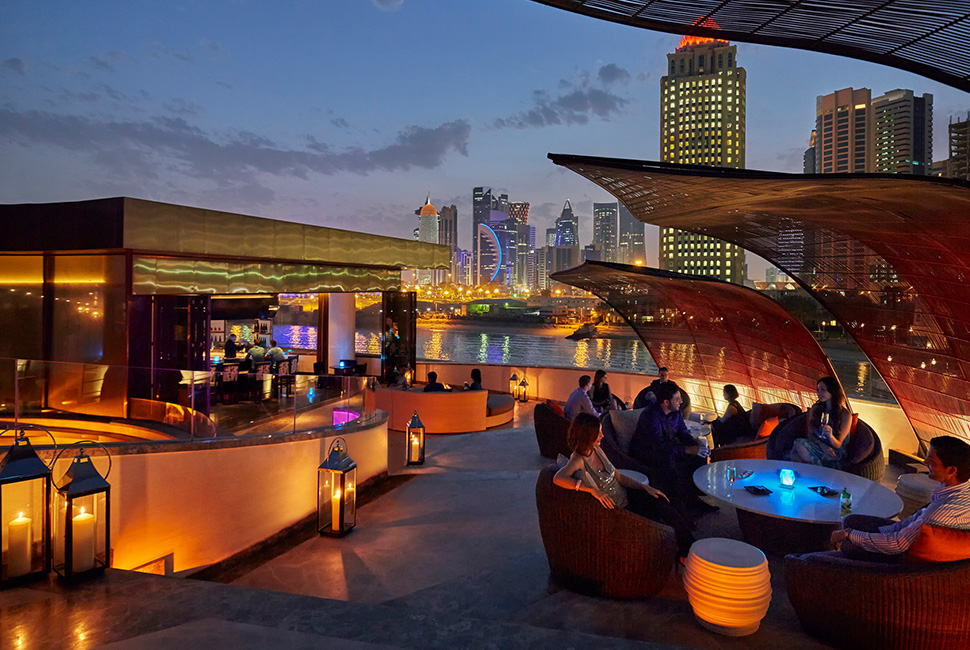
For dinner, head to Nobu Doha, the biggest venue in the Japanese chef-turned-entrepreneur’s global empire, which is less than four miles from the Mandarin Oriental on its own private island at the Five-Star Four Seasons Hotel Doha. Sundowners are best enjoyed from the 360-degree view rooftop terrace, and the lively dining room sees the team turn out immaculate sushi and Nobu classics like the famed black cod.
For another option, La Petit Maison is one of a cluster of world-class restaurants on Al Maha Island. The South of France-inspired place has an air-conditioned terrace and a menu of deceptively simple yet delicious classics. Dive into a starter of garlic butter escargot. The crisp-skinned grilled baby chicken, bathed in a citrusy marinade, is also a must-order.
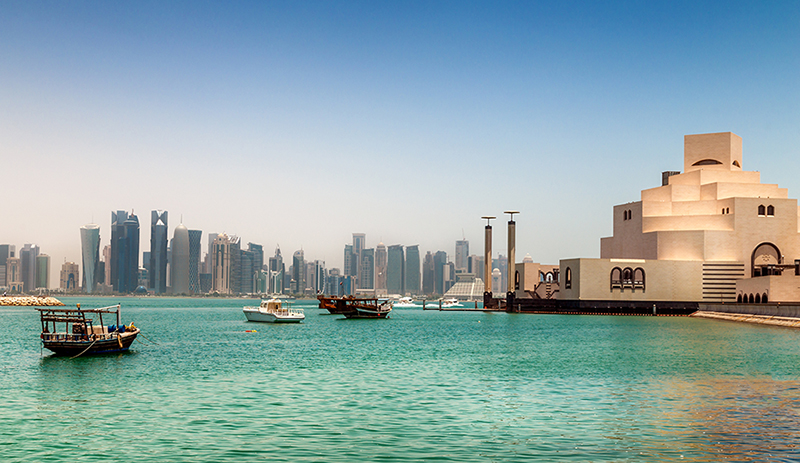
After a leisurely breakfast, make your way to the Museum of Islamic Art on the Corniche for some morning culture. The light-filled atrium, a feature of the I.M. Pei-designed building, alone justifies the visit, but the ensemble of ceramics, manuscripts, glassware and textiles traces 1,200 years of the Islamic world’s history and culture. The MIA’s collection includes more than 800 manuscripts from Qurans dating from the 7th century to the Ottoman works of the 19th century. The showpiece is the Abbasid Blue Quran, one of the finest and rarest manuscripts in the Islamic world.
Once you finish there, stroll the Mina District, one of Doha’s newest attractions. With cobblestone streets and Santorini-like pastel-colored buildings, you can spot giant cruise ships docking or pull up a chair at one of the many cafés and restaurants that have popped up. The neighborhood has also become known for vibrant street art murals adorning the sides of buildings and other public spaces.
When lunchtime comes around, head to Mediterranean fusion eatery Baron. Drawing culinary influences from the Levant, North Africa and even Asia, the menu features its now Insta-famous whole-roasted cauliflower, and other dishes like capellini with crab and shrimp toum (garlic paste) are generous and ideal for sharing.
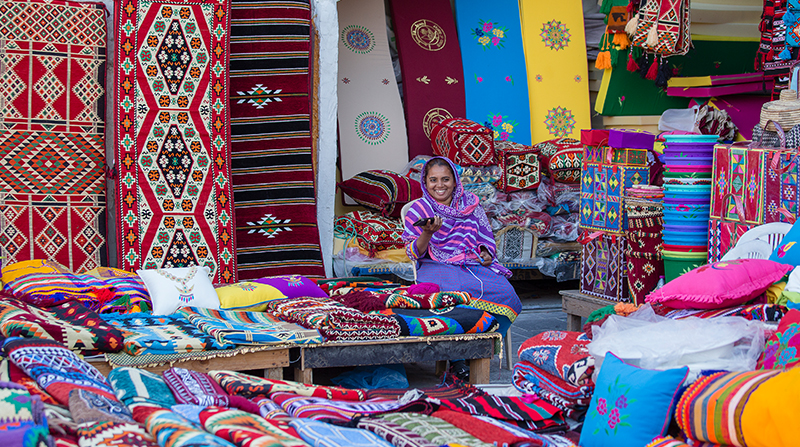
You can also drop into Chabrat Al Mina, perhaps the most beautiful fish market in the world with a stained glass ceiling as its main feature. Peruse the produce on sale or try its restaurant, where you can choose your seafood and cooking style for the chefs to prepare for you.
Leaving the best attraction for last, late afternoon or evening is the prime time to visit Souq Waqif. This isn’t just a tourist trap; it’s a living, breathing market that proves a testament to Qatar’s rich heritage. Start at the adjacent Falcon Souq, a fascinating glimpse into the traditional sport of falconry, which is ingrained in Qatari culture. The hooded birds of prey, sitting almost regally on their perches, are one of the unique sights in Qatar.
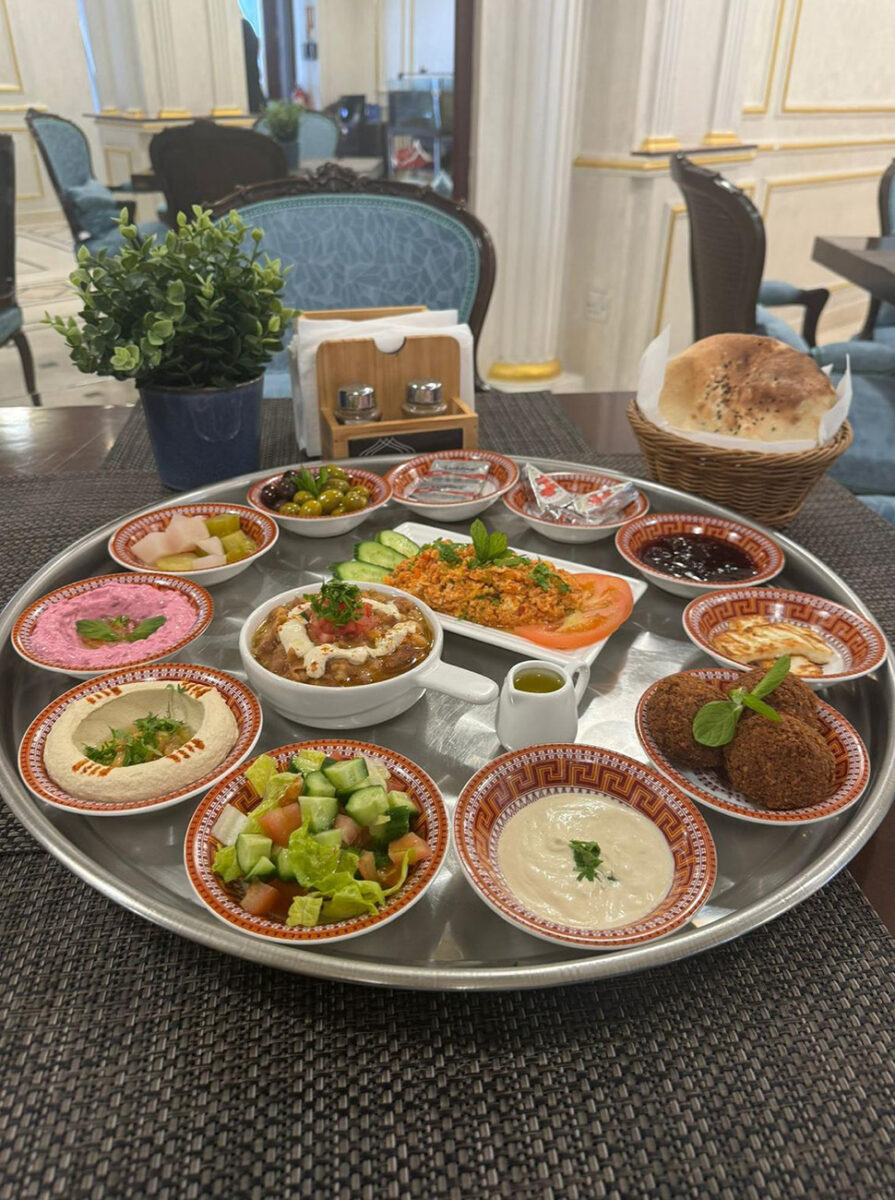
After winding through the souq’s alleyways, via the spice sellers and tailors stitching traditional Qatari robes called bisht, venture up the central spine of the market to soak up the evening atmosphere. Be sure to stop by the shop of local celebrity Saad Ismail Al Jassem, a former pearl diver who sells jewelry and other trinkets and displays photos and souvenirs from his former career.
Pick one of the cafés that line this strip for dinner. At Ali Al Naama, you can order a steaming hot cup of karak (milky, sweet tea) and a chapati flatbread smeared with cheese, honey or chicken. If you want a more elaborate meal, Al Mourjan offers classic Arabic dishes, such as fresh fattoush salad and hummus, lamb biryani and seafood grilled to order. The famed Parisa Souq Waqif, with its bejeweled and lantern-strewn interiors, turns out Persian specialties like rich, slow-cooked stews with saffron rice that’s studded with dried fruit, nuts and charcoal grilled meats. All of them provide delicious ways to close out your two days in Doha.
